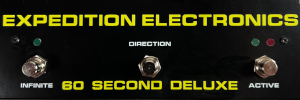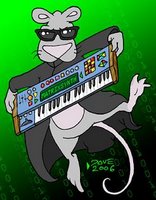
Wednesday, April 02, 2008
PicoPico Machine into the KAOSS 2
YouTube via Wancoco. Note that's actually the KP3.
"from GUNPEY Rebirth DS official site http://gunpey-r.com/ds/index.html"
Roland D-50

images via this auction
"The D-50 is an all-time favorite digital synth that's still just as popular today as when it first came out in '87. Once Roland's hottest digital synth, it competed against the Yamaha DX7, and was much easier to use. By joining 8-bit PCM samples with "LAS" synth-generated sounds, the D-50 is capable of unique and complex sounds. The PCM samples contained the attack transients, while the rest of the sound came from the Linear Arithmatic Synth (LAS) section which sounds very analog, with subtractive-style synthesis and low-pass-resonant filters. Built-in chorus and (for the first time) digital reverb are also included for giving your sounds space and life! It also has a joystick controller for real-time timbre manipulation. The D-50 was great for new and non-acoustic, percussive, ethereal and beautiful pads & sounds.
 SPECIFICATIONS
SPECIFICATIONS* Polyphony - 16 voices (32 partials with 2 per voice); 8 voices (using 4 partials per voice in Dual or Split Mode)
* Oscillators - Digital LAS (Linear Arithmetic Synthesis) & PCM, 32 osc.
* LFO - YES (3 x 2tones = 6 LFOs)
* VCF/VCA - FILTER: low-pass-resonant; AMP: ADSR envelopes
* Effects - YES
* #Instruments - Monotimbral (can be upgraded for multitimbrality)
* Keyboard - 61 note keyboard with velocity and aftertouch
* Sequencer/ARP - None
* Memory - 64 patches
* Control - MIDI"
Space phone
YouTube via MILQUETOASTE. via sendling.
"The only product you will ever need. CD4046 PLL VCO abuse, 4040 counter, 741 VCF, feedback LEDs, goosenecks, polycarbonate dome, high falutin' LDRs. Attractive kitchen appliance from a parallel universe form factor."
miracle baby
 flickr by breath.sound
flickr by breath.soundfull size
This one is labeled buchla in the flickr page. Anyone know what it is exactly? It looks like an inverse MS20, but off.
Modded Moog Prodigy
YouTube via lesingemonotone
"A short showcase of two new mods on my Prodigy:
1. a separate LFO tap to oscillator 2. Very handy during synk.
2. Oscillator 2 tap to filter cutoff, which means nasty filter-fm sounds a la micromoog and multimoog. :)
Other mods not featured in this video: Synhouse midijack and VCF input."
MusoTalk 146 - Studio Legenden - EMU E-MU SP 1200
YouTube via musotalk. "weitere Videos und News auf www.musotalk.de"
Dubstation 1.5 by Audio Damage
 "Witness Dubstation 1.5. The main change is one long-asked-for feature, a 'HI CUT' knob. How it works is thus: at full on, Dubstation will work just like the original, with the delay time setting the high-cut filter frequency. In this manner, you're able to bring in a touch (or a lot) of high frequencies just by rolling back the knob a bit."
"Witness Dubstation 1.5. The main change is one long-asked-for feature, a 'HI CUT' knob. How it works is thus: at full on, Dubstation will work just like the original, with the delay time setting the high-cut filter frequency. In this manner, you're able to bring in a touch (or a lot) of high frequencies just by rolling back the knob a bit."more info on Analog Industries.
CASIO SK-1 - the real sound of the SK by RetroSound
YouTube via retrosound72
"The real sound of the Casio SK-1 sampling keyboard.
I had a few problems with the small keys. Those are rather something for hands of children ;)
Sorry for my april fool :)
The organ sounds of the SK-1 are made with the additive synth section and pretty cool.
5 PCM tones: piano, brass ensemble, trumpet, synth drums, human voice
3 additive synth tones: flute, pipe organ, jazz organ"
jp8080 demo
YouTube via 909techno
"Messing around on the JP8080. Wonderful synth. These are not the typical sounds I make with it so thought I would share them. Something other than the typical sounds. Some weird stuff using the feedback osc. about halfway through if you want to skip the beginning"
Sneaker Pimps - Destroying Angel Live
YouTube via themosttogain. via Jaysen. Can anyone ID what's in what looks like a custom rack synth at 1:15, 1:52 and 3:39?
The Space Echo joins the studio
It's VEMIA Time!!!
 Peter Forest's next VEMIA auction officially starts this coming Saturday, and runs April 5-12. Many items are already listed.
Peter Forest's next VEMIA auction officially starts this coming Saturday, and runs April 5-12. Many items are already listed.First up is Adrian Utley's (Portishead) Minimoog.
"Love or loathe the paintjob! It's a hell of a good Mini even if you personally would strip the paint off. It's lot 5856 at VEMIA."
Click on the "Auctions" tab and search for 5856.
Here's the description for this mini:
"A totally unique Minimoog, for two reasons. One is pretty obvious: it was custom-painted for Adrian Utley of Portishead, with great psychedelic imagery (and a little Portishead logo as well, of course). If you're not sure you could face this first thing in the morning (or any time), then it could all be removed - the painting is only on the woodwork. The second is not so glaringly obvious, but this is a special Mini for another reason: it was the one that Adrian gigged with on all the Portidhead tours, and featured heavily in all live shows including the famous New York concerts on DVD. He used it (when most people had forsaken vintage gear onstage) because it was supremely reliable as well as being great-sounding. (The painting was done after the touring, by the way, so you can't see it on the DVD.) This picture was taken before it was taken to Lucid Sound for a full checkover and service where necessary, so the keyboard is extremely uneven in the photo. Lucid are currently re-bushing it, so it will be smooth and a pleasure to play; and will do the minor calibrations that are the only other thing that is needed to get this back into perfect working condition. It has a CV/gate mod; the panel is in decent condition; and all in all you're unlikely to find a better working Mini, or one that is more reliable even on tour. It will come with a very limited (2/4 !) edition glossy A4 photo of the Mini. The synth will come with a clear certificate of provenance."
Just for fun, I thought I'd make a poll on the paint job.
Feel free to comment if you feel passionately on this either way.
Tuesday, April 01, 2008
Little Phatty Stage II MIDI Sync Demo
YouTube via MoogMusicInc. http://moogmusic.com/
"Amos Gaynes gives us a quick demo of the new Little Phatty stage II arpeggiator and MIDI Clock sync functions"
CreamWare Prodyssey ASB

via this auction
"The PRODYSSEY ASB is a one-to-one DIGITAL reproduction of the ARP Odyssey synthesizer. The ARP Odyssey is a true analog synthesizer from the 1970's and has taken its proper place alongside other classic synths. It can be considered a compact version of the halfmodular ARP 2600, making it ARP's answer to the successful Minimoog. But this synth is much more than that. While it is based on the classic analog synthesizer design - with oscillators, filters, and amplifier - it also offers a number of interesting improvements that make it unique and exciting.
- Original power supply, no original box, manual sent via email in .pdf format
- Will be bubble wrapped and shipped in a sturdy box
- Kept in a smoke free, pet free, climate controlled studio
- Reputable seller with > 100 stars
- UPS tracking # emailed to you within 24 hours of auction close
- Feel free to send questions but please read terms below carefully
Manufacturer information is here.
Audio demos are here:
prodyssey-song-1.mp3
prodyssey-song-2.mp3"
Hands Up with the Korg X5D
YouTube via Hanni13579
"A small Cascada-like Arrangement with all musical instruments (pads, bass, lead etc.) done with a Korg X5D. See video for more details. You can download the song here: http://jayb.ath.cx/X5D/X5D_Hands_Up.mp3 Again: This is no fake. And if you don't believe it, go to my page, download the bank and transfer it to your X5D."
E & MM
 via this auction
via this auctionNot the best shot but you don't see these often. No extra info in the details of the auction. Click on the EMM label below for prior posts with more info.
Plan B Model 13 Dual Timbral Gate


via this auction. "The Model 13 is an enhanced derivative of the infamous Buchla 292 Low Pass Gate. Fits Doepfer and Analogue Solutions Euro Rack frames. Manufacturer info with audio demos here."
devi ever : fx - MASTER CONTROL, joystick expression device
YouTube via devieverfx. http://www.deviever.com/fx/
Symbolic Sound Kyma X Capybara 320 Firewire
 images via this auction. via donnachacostello on the forum.
images via this auction. via donnachacostello on the forum."Symbolic Sound Kyma system comprising Kyma X and the Capybara 320 Sound Computation Engine with Firewire Interface.
Also included is the 'Kyma X Revealed' book by Carla Scaletti, an in depth guide to the workings of this extremely deep and versatile system which future music magazine calls 'The Holy Grail of Sound Design'.
 Users range from Autechre and Cristian Vogel at one end of the scale to John Paul Jones and 90% of major motion picture sound designers in Hollywood at the other."
Users range from Autechre and Cristian Vogel at one end of the scale to John Paul Jones and 90% of major motion picture sound designers in Hollywood at the other."
Orchestron, Optigan & Talentmaker fest.
YouTube via RothHandle
"Yesterday I decided to record a little line on the Vako Orchestron. While I was recording it I decided to walk you through the Optical organs at the Roth Händle studio. For more info, bookings and blogness please visit www.roth-handle.nu"
Roland Alpha Juno-1 with Behringer BCR2000
YouTube via wireslave
"A short demonstration of the Roland Alpha Juno-1 synthesizer being programmed with the Behringer BCR2000 MIDI controller. I don't get to all the parameters in this video, but enough to give an idea of the Juno-1's sound and how readily it responds to MIDI control."
Prno Song
YouTube via SoundwaveXX
"Screwing around with a Softsynth Demo, that keeps mumbling throughout the song 'thanks me for trying me' Since I hate Softsynths though, I didn't finish this song either, but I'm going all-hardware from now on and with the help of a soon to arrive Yahama MO6 I will bring you this painfully obvious Gunther and the Sunshine Girls-Rip-Off new and improved :)."
Jomox XBase888 Drum Machine - standard patterns & sounds
YouTube via bigcitymusic
"http://www.bigcitymusic.com
Here are some standard patterns and sounds from the Jomox XBase888."
Recording the Claptrap for Rhys Marsh
YouTube via RothHandle
"This last MOnday I overdubbed some Clap trap to the end section of the Rhys marsh track all lights fade. For more info please visit www.roth-handle.nu"
PAiA Gnome
YouTube via slondo1. via Nusonica.
"My dad found this at an auction. I cleaned it up and put some batteries in it, and it seems to mostly work. Seems they were sold as DIY kits around 76-82. Its kind of a relic."
Yamaha CS-15 Video Demo Part 2
YouTube via stenophonic. Follow-up to Part 1 here.
"Demo of the Yamaha CS-15 analog synthesizer, part 2 of the video demo.
Overview of the envelope generators, VCAs, oscillator glide, high frequency LFO modulation.
The closing sound is the CS15 with some delay and slight reverb. All of the sound within the demo was made using NO effects, other than a simple three band EQ from my Roland KC-550."
The Clavia Left Lead
 "In a strategic move to strengthen its presence on the MI market, Clavia has today announced that it will start developing a serie of instruments aimed at the left handed musician. "We have realized that there are so many left handed musicians out there, that never have gotten the chance to properly explore the thrill of playing a keyboard."
"In a strategic move to strengthen its presence on the MI market, Clavia has today announced that it will start developing a serie of instruments aimed at the left handed musician. "We have realized that there are so many left handed musicians out there, that never have gotten the chance to properly explore the thrill of playing a keyboard.""Guitars and microphones for left handed users have been readily available for ages. Sir Paul McCartney, Phil Collins, and the late Jimi Hendrix and Judy Garland are just a few of those who we feel have been totally neglected by keyboard manufacturers for far too long. We aim to make every one of our current products in a left oriented version, starting with the Nord Wave", says Clavias recently appointed division manager Mr Styrbjörn Babord. More information will be released shortly."
More info on the Clavia website.
Raymond Scott 100
 Science Reporting has an excellent post up on Raymond Scott. The following are a few excerpts (be sure to check out the full post on Science Reporting).
Science Reporting has an excellent post up on Raymond Scott. The following are a few excerpts (be sure to check out the full post on Science Reporting)."In 1942, he became Music Director for CBS Radio and made history by hiring black musicians. His CBS band was the first racially integrated band for radio. In 1946, he founded Manhattan Research Inc, "the world's most extensive facility for the creation of Electronic Music and Musique Concrete." It was the first electronic music studio...
In 1949, Raymond said, 'Perhaps within the next hundred years, science will perfect a process of thought transference from composer to listener. The composer will sit alone on the concert stage and merely think his idealized conception of his music. Instead of recordings of actual music sound, recordings will carry the brainwaves of the composer directly to the mind of the listener.'
By the mid-50's his studio began to look (according to friends such as Robert Moog) like a science fiction set. Over the years, Raymond invented numerous electronic musical instruments including the Clavivox and the Electronium.
Robert Moog credits Raymond as an important influence on the invention of the Moog Synthesizer. In 1962 and 1963, Raymond released Soothing Sounds for Baby. It was entirely electronic music he composed as an "aural toy" for children. While it was a commercial failure at the time, some now regard it as a strong pre-cursor to ambient music (over a decade before Brian Eno's recordings)."
Syntech/Chroma Cult Schematics & Source Code
via Chris Ryan on the Rhodes Chroma list: "Ken Ypparila has kindly contributed the schematics and hex source for the Syntech (AKA Chroma Cult, AKA KMX) MIDI Retrofit."
HarriL - 01042008(live)
video upload by HarriL
mp3 here.
"Hey, nothing much to say about this. It's something electronic. :) Im' ok with the end result, although it's not quite what I was hoping for. The other camera had kind of corrupted the video data, so you see interesting hand movements when the second camera is used.
Gear used:
Korg EMX & ESX
Novation K-station
FutureRetro Revolution
Emu Xboard -> DSI Evolver -> Behringer Virtualizer Pro
Quasimidi 309"
Thanks, HarriL!"
Rush - The Spirit of Radio (Soundcheck 1979)
YouTube via Hemispheres88. via Magnus. Spot the synths. Note his feet and the close-up of the Oberheim at :48.
PLAN B SYNTHESIZERS MOVES TO NEW HOME AND NEW US DEALER
 Press Release
Press Release"(POMONA, CA) We are pleased to announce that effective April 2 PLAN B begins it's move from Toluca Lake to take permanent residency in the loft of the NOISEBUG complex in Pomona, CA. - formerly the home of Analogue Haven. Along with this we are equally excited that NOISEBUG has become our new exclusive U.S. dealer with shipments beginning in approximately two weeks. We wish to thank Shawn Cleary and Chuck Oken of Analogue Haven for two years of excellent representation and service to the Plan B line.
In the next few weeks there will announcements from Electro-Acoustic Research on the release of the Models 16, 21, 21C, 23 and the new Models 30, 30A, 31, 32, 33, 34, 35, 36, 37, 38, 38A, 39 and 40 along with three different chassis as we shift focus from modules only to full systems.
Shipment of Plan B products to our dealers will commence on April 10. We appreciate your patience during this interim period as we set up operations.
We look forward to the challenges which lay before us in the next coming months and thank our customers for making it happen.
Plan B worldwide dealers: http://www.ear-group.net/purchase.html
Noisebug official site: http://www.noisebug.net"
Adaptive Use Musical Instrument Demo (7/23/07)
YouTube via vanduz. via peterwendt:
"I loved the recent post about the Beamz system and video harps. In the same vein, here's something that has been making the rounds of music news sites since December. It's a system to allow people with severe physical handicaps (such as cerebral palsy) to play music.
This story emphasizes one of the reasons I'm interested in computer music and synthesizers. My left hand is partly paralyzed, but I love programming synths and trying to play music for my own enjoyment. Also, the story reminds me of of the time I introduced computer music to a girl who had some cerebral palsy. She could sit and walk, but fine control and speech were difficult for her. I brought my laptop system* into a cafe to share with her. After demonstrating it, I let her play with it, and the look of happiness on her face when she hit a key was amazing.
(*laptop with 2-octave keyboard controller and Arturia Moog Modular V)
Thanks for the good work, and don't drive yourself into the ground for the rest of us!
Regards,
Peter"
Interview at Cycling74
Official Project Page
Demo Video (same as above)
Monday, March 31, 2008
1977 3M Ad
 via this auction
via this auctionNote this ad is for 3M tape, not the MOOG Modular.
The reference to Bach and the image is of course to Switched on Bach by Wendy Carlos.
Blacet Time Machine - BBD Analog Delay
 via this auction
via this auction"What is it??
This is a voltage-controlled BBD analog delay module, typically found inside a larger modular synthesizer setup. However the unit can also be used on it's own - but in either case it requires a +/-15v power supply, which is not included in this auction. The module is designed for to handle 10v AC audio signals, and to use up to 10 volts of DC for CV (control voltage) control of it's various parameters.
At its heart, this module is built around a 4096-stage, 1980's analog BBD (bucket-brigade delay) chip. This means analog delay. This means dirty, evolving echos, and haunting flanges & choruses. The famous modulated delays found in dub music are child's play for this module. With analog delay units, the pitch of the repeats changes when the delay time changes, which gives them a very different sound and feel from their digital counterparts, and is the main reason why they remain so popular in the modern, digital age.
Oh, if you are wondering, YES it can easily do the 'infinite wall of feedback building and building into pure insanity' thing, just crank up the 'Regen' knob and cover your ears.
OK then, but what makes it so special?
The Blacet Time Machine is considered one of the most powerful and desirable analog delay units of all time. There were between 200-250 made, and they were discontinued in the fall of 2005. Blacet has stated that they will never return to production. The issue is in the availability of the rare analog BBD chip inside the unit - they have not been manufactured since the 1980's, and the supply has simply become too limited to make building more units feasable. It is truly the end of an era. Time Machines always sell very quickly when they show up on the used market, and the price seems to climb a little bit every few months.
What makes this unit special compared to most analog delay units is the provision of CV (control voltage) inputs for EVERY PARAMETER. This creates a monster which can be fully controlled by other modules and voltage sources (including audio!) within your setup. On top of this, the unit includes a built in modulation LFO (with rate and depth controls - and of course the option to override it - or mix it - with an external modulation signal) and - now this is the special part - Blacet's peerless compander system.
What's a compander system? Well, the main problem with analog delays is NOISE. A bit of noise and grit is desirable in these units, and adds to their character. But extraneous levels of noise - and in particular clock noise, are not desirable effects at all. It is the 'bleeding' of clock noise (the clock is required to manage the timing of the BBD device, which thus controls the delay time) into the output signal that can be heard to some extent in just about every other analog delay unit out there. Clock Noise is the one big downfall to analog delay designs. Blacet has solved this with their wonderful compander system. In a nutshell, the input signal is compressed, sent through the BBD circuitry, and then expanded again, while being gently filtered to remove whatever clock noise still creeps in after the compander system. This also works to solve the other problem with analog delays, which is interfacing the limited signal range of the BBD device with the (typically much larger) signal ranges that are being used in your studio.
As a final, super cool extra bonus (in case there weren't enough features already jammed into this little monster!), both the modulation setting and the delay output have 'cancel' (and 'reset') inputs, which are often overlooked by many Time Machine owners, but are in my opinion a wonderful feature allowing the creation of gated and 'sequenced style' delay patterns in your music.
So what?
The result of all this is a dead quiet, ultra-powerful analog delay unit that makes no compromise in terms of onboard features, manual control or voltage control and automation. It's no wonder they are so famous and desirable.
And it's no wonder why it is breaking my heart to sell it. Believe me, these are truly excellent units, there's nothing out there like them at all. Feature lists can be read and compared all day long, ultimately it is all about the sound - and this is one area where the Time Machine blows away all expectations. No searching for the 'right setting' - no! Within about 5 seconds of plugging something into this module - YOU'LL KNOW. You really will. You'll just know, m'kay?
Details -
This started its life as one of the original units, a Revision 'A', and has subsequently been upgraded to Rev. B by John Blacet himself (see below). The unit was not originally factory built, but was built from kit by a good friend of mine who is a professional electrician, and a radio and amp geek. He is always soldering something, and his work is absolutely top-notch, as good as the Blacet factory. The unit is in EXCELLENT condition, has been kept lovingly under dustcovers in a smoke-free, cat-free, clean studio. The unit is FULLY FUNCTIONAL in every respect, and all pots are smooth and silent.
In the summer of 2007, the module was sent to John Blacet (my electrician friend has sadly moved away, and I have no soldering skills myself) to be upgraded to a Revision 'B' spec. John went over the entire module while it was in his hands, and made sure everything was solid - he commented to me that the quality of work was excellent, and that there was nothing at all to be concerned with. When the module was returned to me it had been upgraded to Rev. B and the one issue with the original design (raretimes crashing of the internal clock) has been successfully resolved.
This is a top-notch unit, and will bring many years of joy to its new owner."
Clifford Stoll: 18 minutes with an agile mind
Synth content comes in at 6:30 but do watch this from the beginning.
Great stuff. If you appreciate and respect Robert Moog, DO NOT miss this video.
Thanks goes to Ben for sending this one in.
TED Talks page with more info on the talk and Clifford Stoll.
Clifford Stoll website. Clifford Stoll on Wikipedia.
Video description:
"Clifford Stoll could talk about the atmosphere of Jupiter. Or hunting KGB hackers. Or Klein bottles, computers in classrooms, the future. But he's not going to. Which is fine, because it would be criminal to confine a man with interests as multifarious as Stoll's to give a talk on any one topic. Instead, he simply captivates his audience with a wildly energetic sprinkling of anecdotes, observations, asides -- and even a science experiment. After all, by his own definition, he's a scientist: 'Once I do something, I want to do something else.'"
PREVIOUS PAGE
NEXT PAGE
HOME
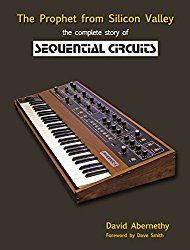
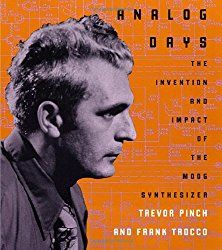
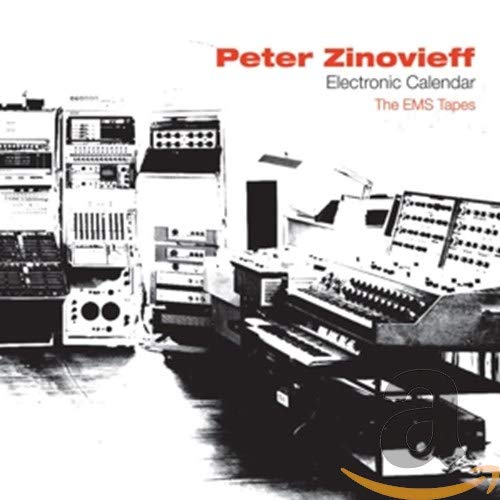
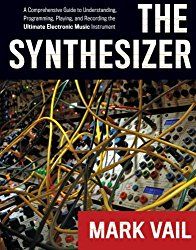
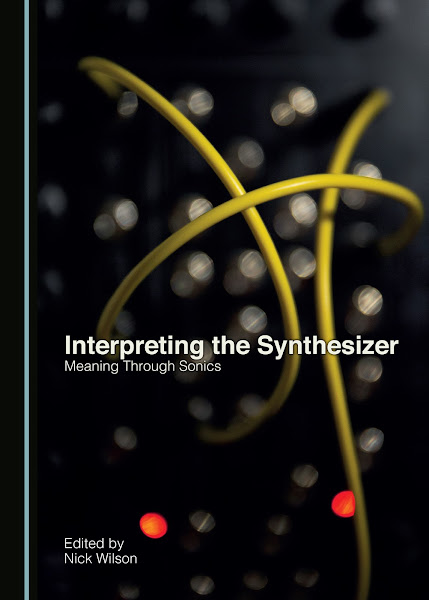
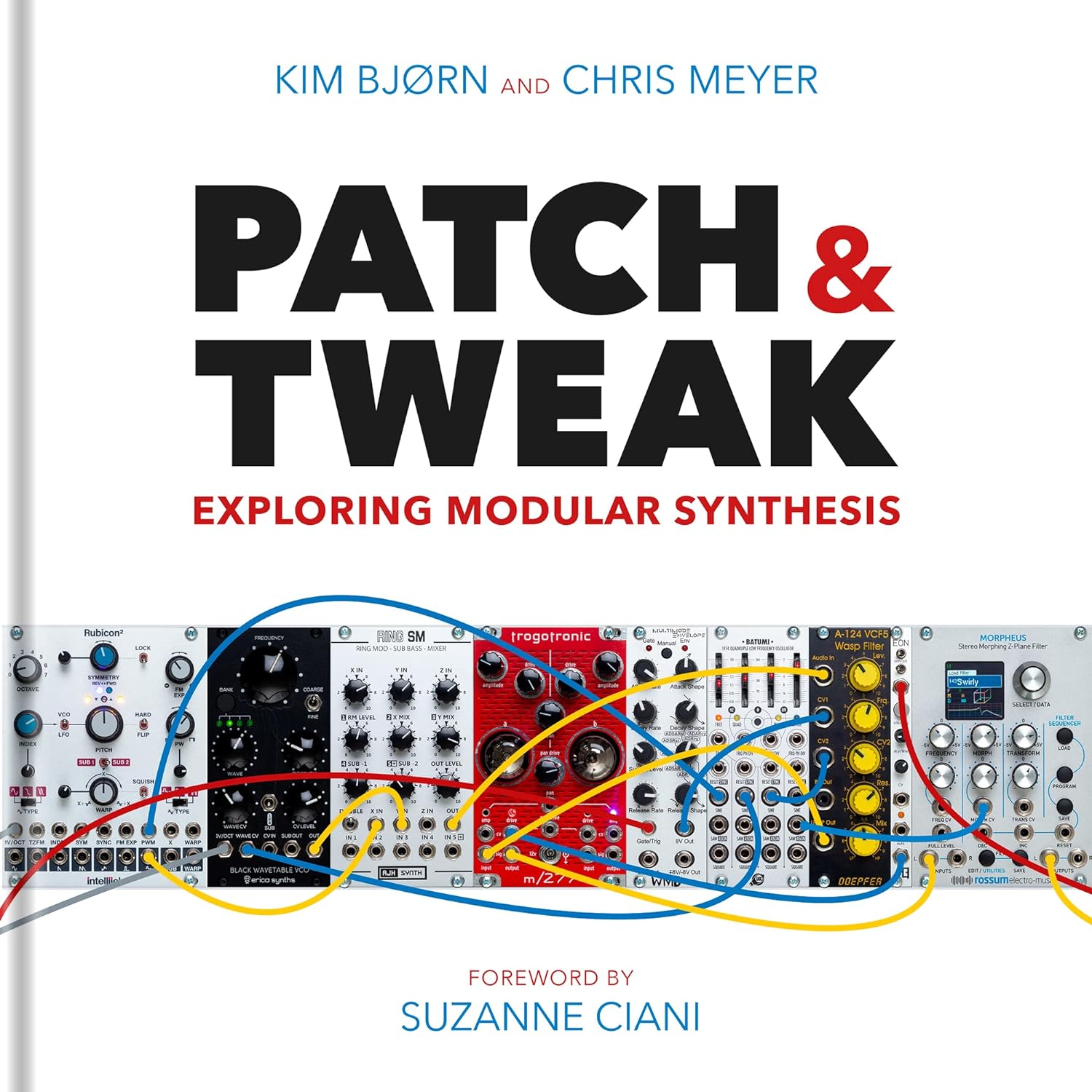
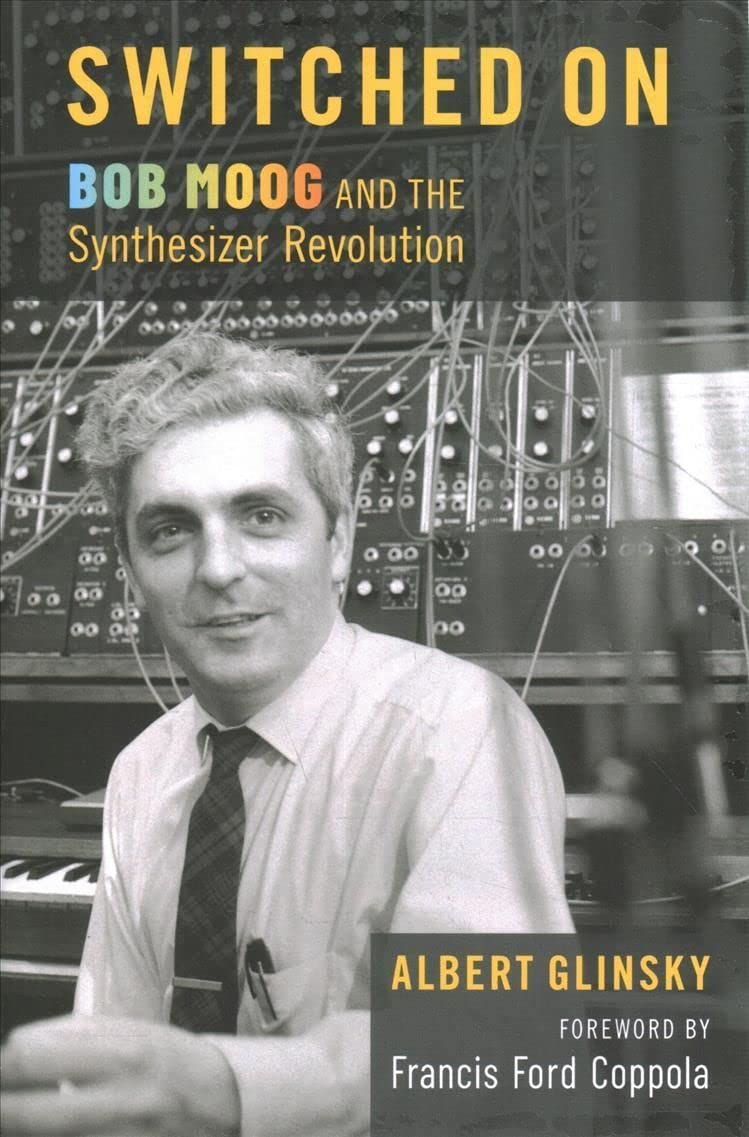
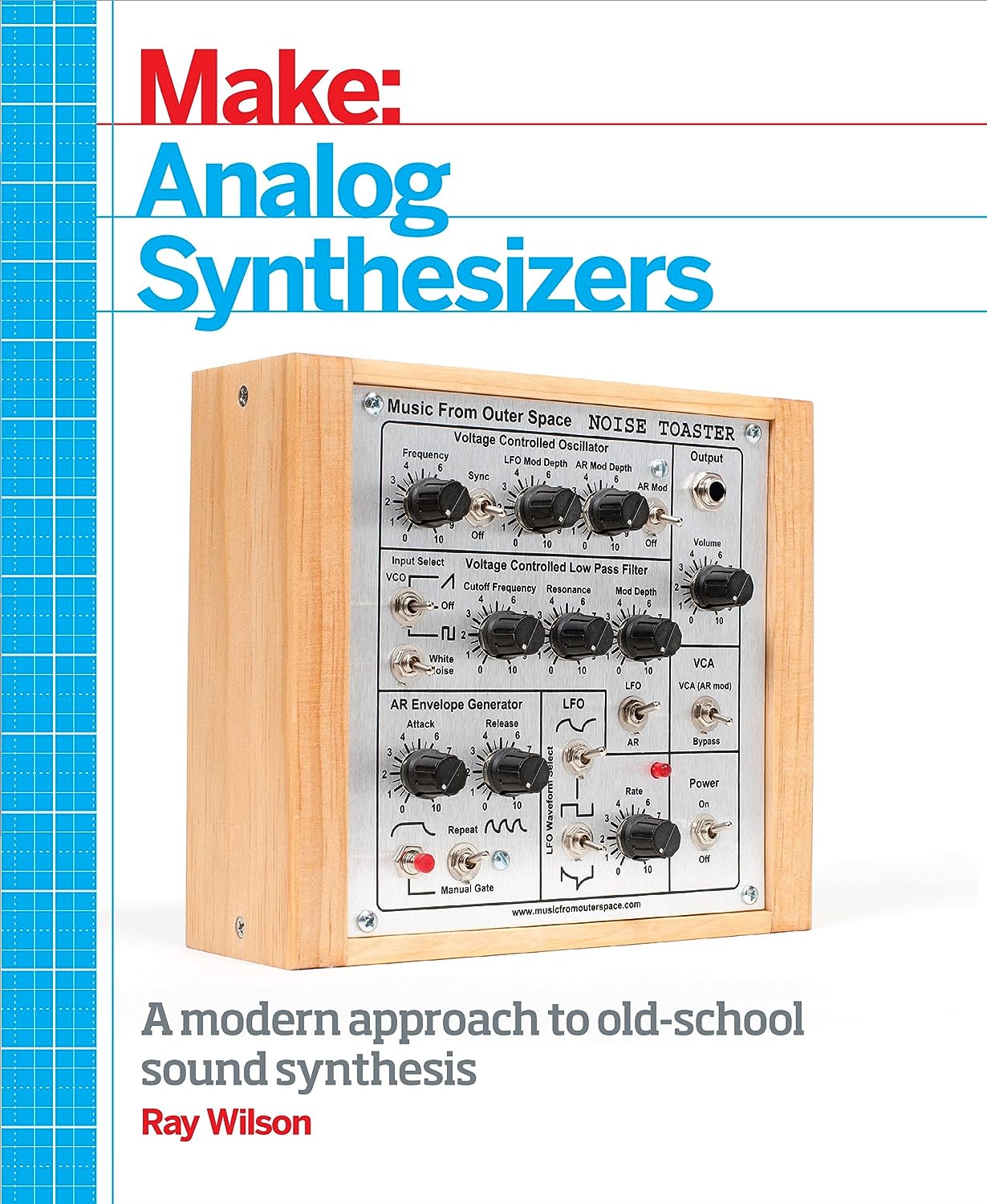
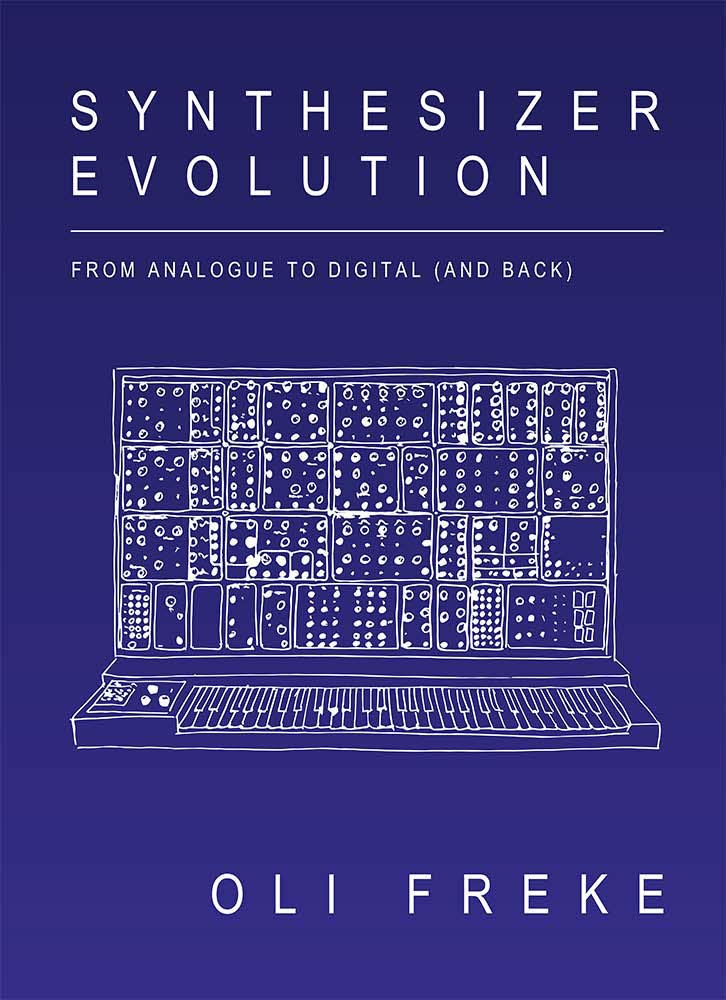
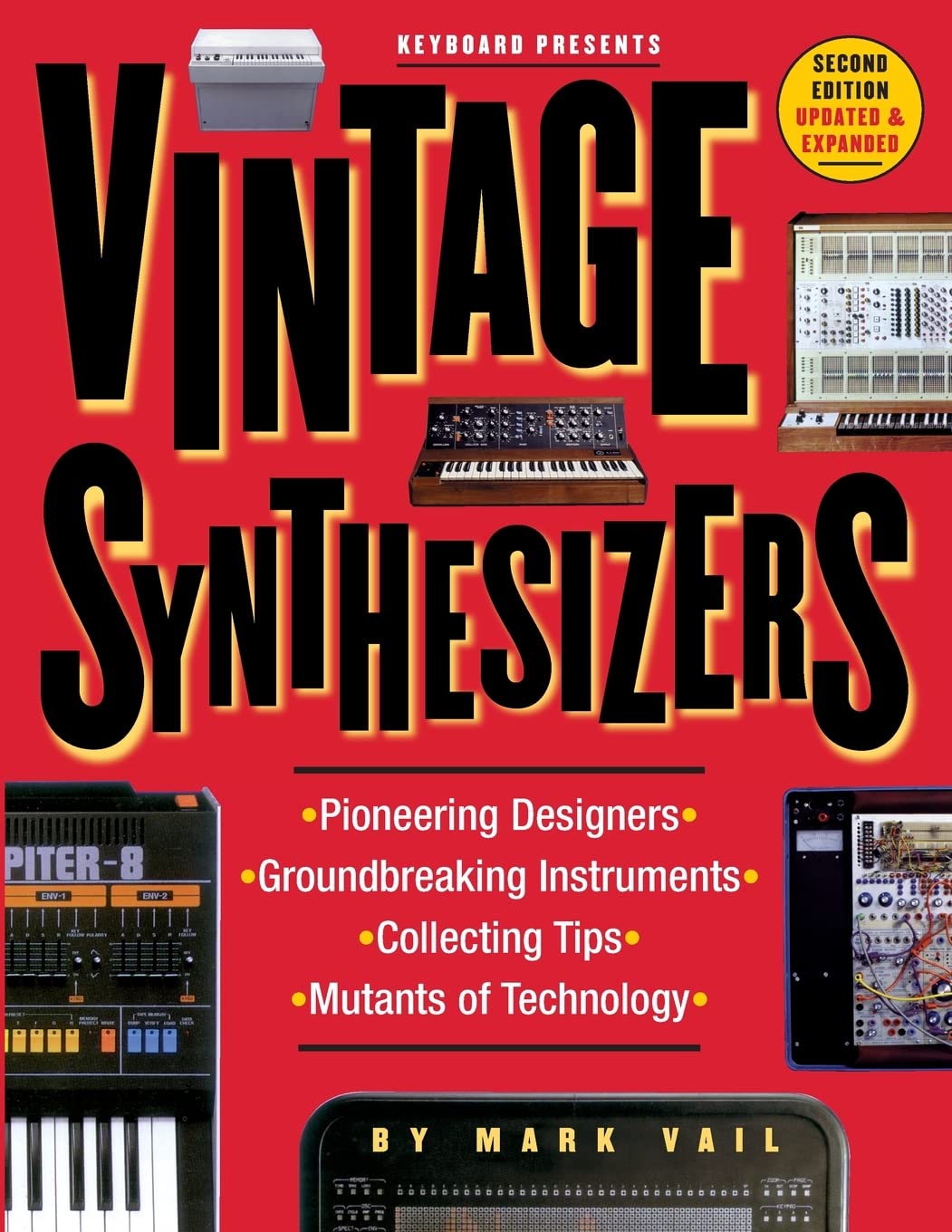
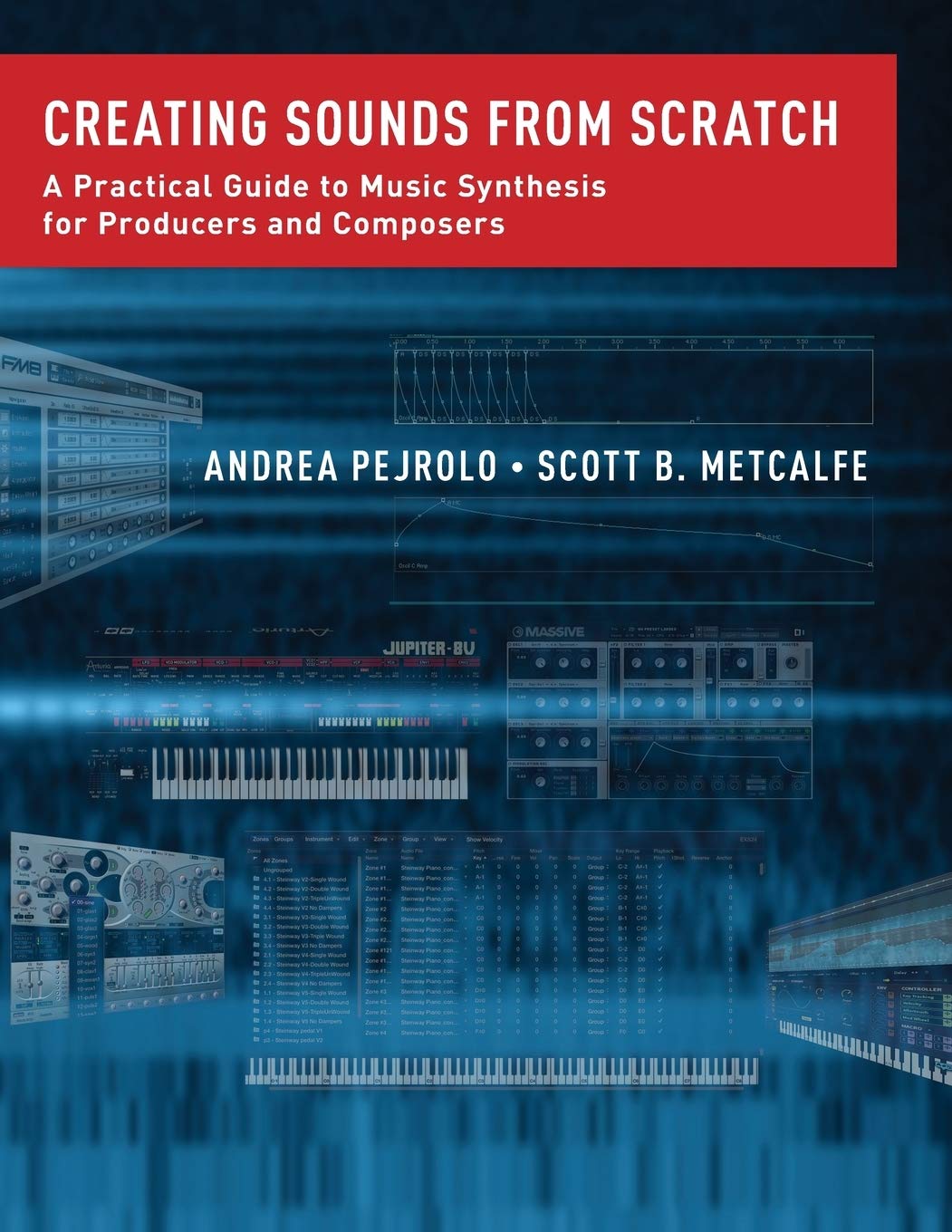
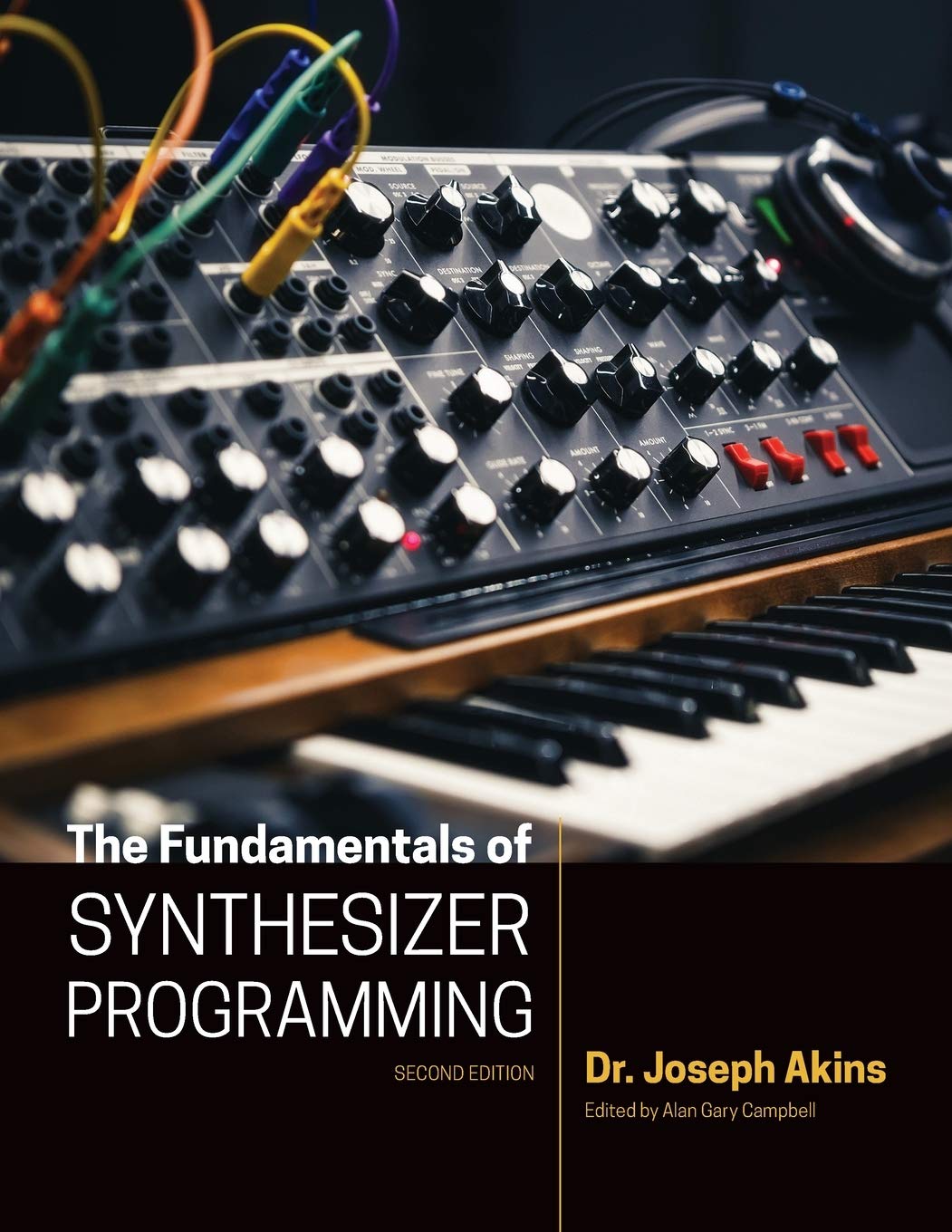
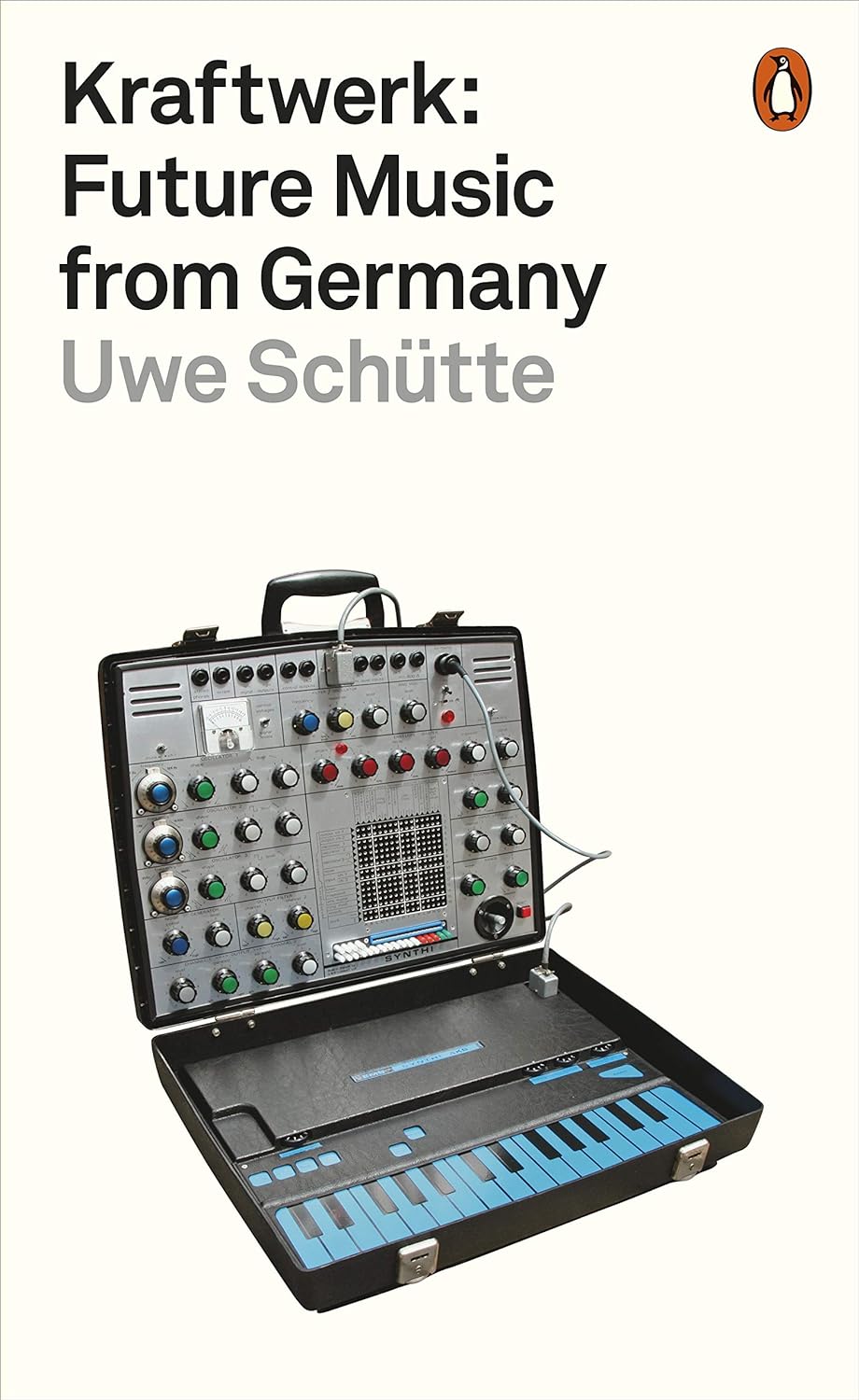
© Matrixsynth - All posts are presented here for informative, historical and educative purposes as applicable within fair use.
MATRIXSYNTH is supported by affiliate links that use cookies to track clickthroughs and sales. See the privacy policy for details.
MATRIXSYNTH - EVERYTHING SYNTH













© Matrixsynth - All posts are presented here for informative, historical and educative purposes as applicable within fair use.
MATRIXSYNTH is supported by affiliate links that use cookies to track clickthroughs and sales. See the privacy policy for details.
MATRIXSYNTH - EVERYTHING SYNTH





.JPG)
.JPG)



















